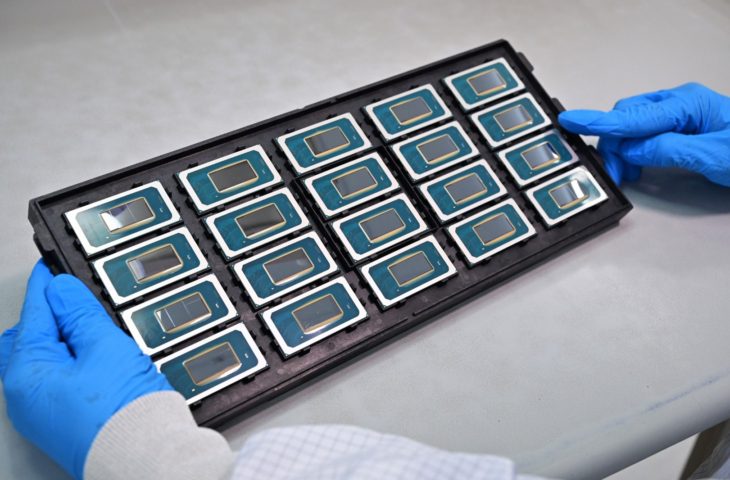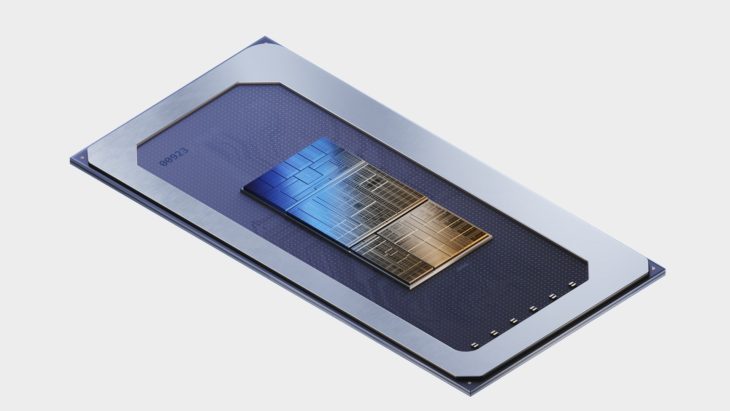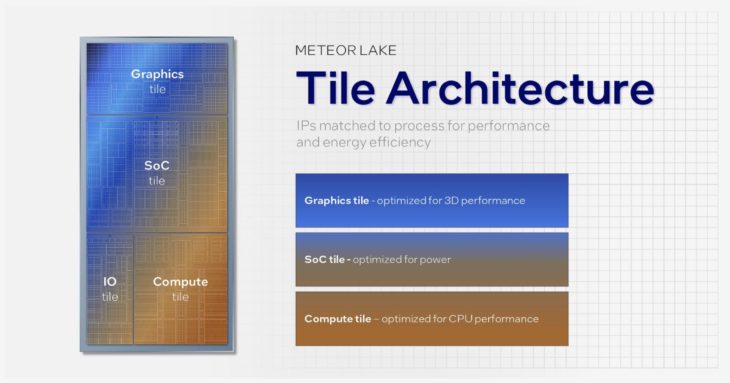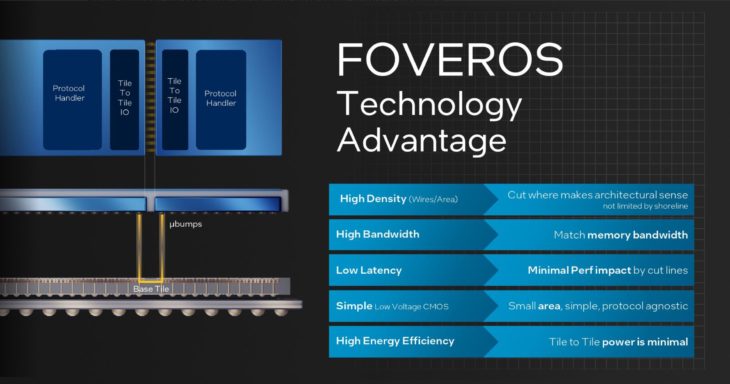Intel will launch “Meteor Lake” Core Ultra chips on December 14th
- September 20, 2023
- 0
Intel Meteor Lake is packed with new technology, a new production process and a new name: Intel Core Ultra. The first chips will be available this year. “The
Intel Meteor Lake is packed with new technology, a new production process and a new name: Intel Core Ultra. The first chips will be available this year. “The


Intel Meteor Lake is packed with new technology, a new production process and a new name: Intel Core Ultra. The first chips will be available this year.
“The biggest architectural change in more than 40 years.” Intel boss Pat Gelsinger makes it clear that the new Meteor Lake chips are of crucial importance and bundles many new technologies for this purpose. Hence the new name: Intel Core Ultra.
The new chip is no longer just a processor (CPU) connected to an integrated graphics card (GPU). There is now also space for a system-on-chip (SoC) and a separate I/O area. Above each of these elements sits a Foveros 3D base, connecting all functional units with sufficient bandwidth and low latency to support the principle of a monolith The as close as possible.
Intel itself bakes the CPU on the Intel 4 process, a first. According to Gelsinger, the first Yields promising and the best thing ever when switching to a new production process. Intel is also responsible for the Foveros layer. The rest is up to TSMC.
| Intel Meteor Lake chiplet | Manufacturer / production process |
| CPU | Intel/Intel4 |
| GPU | TSMC/N5 (5nm) |
| SoC | TSMC/N6 (6nm) |
| IO | TSMC/N6 (6nm) |
| Foveros 3D | Intel/Intel16 |
As in recent years, Intel is also working with P-Cores (performance) and E-Cores (energy efficiency). As a reminder, Intel introduced P and E cores with its Alder Lake Core chips. By reducing the process to Intel 4, the CPU is said to be up to 20 percent more energy efficient. Traditionally, process reduction is rarely accompanied by large increases in performance. These are often reserved for the next generation after the manufacturer has gained more experience within the smaller process. Intel is therefore not disclosing any performance details or benchmark numbers (for now).
The E-Cores are available in clusters of two or four cores and share 4MB of L2 cache and 3MB of L3 cache. Until now, Intel only had large clusters of four available. Now more combinations can be made within Meteor Lake.

For the first time, Intel chips contain a third variant of CPU cores: “Low Power Island” E-cores, which are not located on the CPU itself, but on the SoC. There are two in total on the SoC. In its presentation, Intel speaks of a “three-tier” hierarchy within a 3D hybrid architecture.
The integrated GPU is built by TSMC and uses the Intel Xe-LP architecture, which is very similar to Intel’s discrete graphics cards that have been available on the market since this year. According to Intel, it doubles the performance per watt compared to the previous generation.
The SoC tile on the chip serves as a central communication point, which also houses the two new energy-efficient cores. On the The also includes a Neural Processing Unit (NPU) used only for AI workloads or other similar processes.

Everything from the image, screen and media is transferred from the GPU to the SoC. Things like HDMI 2.1 and DisplayPort 2.1 are now managed there and support 8K HDR and AV1 encoding/decoding. The DDR5 and PCIe controllers are also on the SoC.
The I/O tile is the smallest of the four Meteor Lake tiles and includes I/O features including Thunderbolt 4 and PCIe Gen 5.0. These are directly connected to the SoC in which the controllers are located.
When a chip is made up of multiple tiles, a solid connection is crucial to tie everything together. Intel is fully committed to its Foveros 3D technology, which covers the entire spectrum The as if a thin film covered everything. According to Gelsinger, this is the most important architectural change Intel has ever made in the PC market in the last 40 years.
According to Intel, Foveros supports up to 160 GB/s per mm, meaning the bandwidth can be scaled with additional connections between chips. While there are drawbacks to the new packaging technology, Intel still believes Foveros is worth pushing forward.

Gelsinger: “The interface is incredibly fast and uses very little power. An additional advantage is that we will be able to work with even smaller chiplets in the future, allowing us to do even more that is can be extracted from a wafer (up to 10% more).” Intel wants to further advance this type of “packaging technology” and quadruple its production capacity by 2025.
We’ve had to wait a long time for this, but the first chip on the new Intel 4 process is gradually becoming a reality. The first systems with the Meteor Lake chips will be available on December 14th, now under the Intel Core Ultra banner. The name change is appropriate here because Intel is taking a completely different approach.
When it comes to performance, we’re in the dark. During the presentation, Intel only showed some energy efficiency numbers here and there, but hardly a word about performance. It is not yet clear which chip variants Intel has in stock. The full lineup, including comparative benchmarks, may be announced later this year. It remains to be seen whether Intel will also produce desktop chips with the Meteor Lake architecture. At the beginning of the year there were rumors that production had stopped.
We are very excited about the new chips. Intel has faced tough competition from AMD in the PC market in recent years. There’s little chance that Meteor Lake will provide a performance boost, but we’re very excited about the greatly improved power efficiency. This, combined with a potential big leap in performance for the next generation of Intel chips the following year, means Intel is once again in the top tier.
Source: IT Daily
As an experienced journalist and author, Mary has been reporting on the latest news and trends for over 5 years. With a passion for uncovering the stories behind the headlines, Mary has earned a reputation as a trusted voice in the world of journalism. Her writing style is insightful, engaging and thought-provoking, as she takes a deep dive into the most pressing issues of our time.